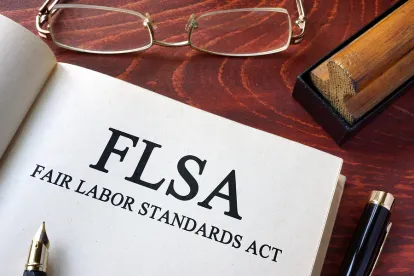Rule establishes standard under which two employers will be deemed jointly and severally liable under the Fair Labor Standards Act as of March 16, 2020
In January 2016, we posted about an Administrator’s Interpretation issued by the US Department of Labor’s (DOL) then-Wage and Hour Division Administrator that provided guidance for when two or more employers should be considered “joint employers” under the Fair Labor Standards Act (FLSA). (The FLSA is the primary federal statute that regulates minimum wage and overtime compensation for US workers.) This guidance noted the “growing variety and number of business models and labor arrangements,” and suggested that because of this, more direction was needed “to hold all responsible parties accountable for their legal obligations.”
Now, four years later, the DOL has issued its Final Rule on Joint Employer Status under the FLSA. The rule specifically addresses two types of potential joint employment scenarios.
The first is where one employer employs the employees but another employer simultaneously benefits from that work, for example, where one employer uses employees provided by a staffing company. Under the new rule, the DOL will apply a four-factor balancing test (from a case called Bonnette v. California Health & Welfare Agency) to determine whether the employer using the employees provided by the staffing company is directly or indirectly controlling those employees such that it would be a joint employer – and thus jointly liable for payment of wages – of the staffing company’s employees. The factors to be assessed are whether the potential joint employer:
-
hires or fires the employee;
-
supervises and controls the employee’s work schedule or conditions of employment to a substantial degree;
-
determines the employee’s rate and method of payment; and
-
maintains the employee’s employment records.
The rule makes clear that no one factor is determinative, and whether an employer is a joint employer will depend on the facts of each case.
Importantly, the rule also identifies factors that are explicitly stated as not relevant to a determination of joint employer status under the FLSA. These include that the potential joint employer requires the other employer to comply with certain legal obligations relating to non-discrimination, health, and safety, or requires the other employer to adhere to certain standards to maintain quality, or even provides the other employer with a sample employee handbook.
The second scenario noted in the final rule is where one employer employs employees for part of a workweek and another employer employs those employees for the remainder of the workweek. The new rule does not alter the standard for determining joint employer status in this scenario. Here, a joint employer finding requires that the two employers “share the employees’ services, the potential joint employer is acting directly or indirectly in the interest of the other employer in relation to the employees, or they share control of the employee, directly or indirectly, by reason of the fact that one employer controls, is controlled by, or is under common control with the other employer.”
The new rule is likely to have its greatest impact in the staffing and franchise industries, but all employers should take note. The full text of the new rule is available here.
Last, it bears note that the DOL is not the only federal administrative agency that has been working on adopting rules to apply to joint employer determinations. As we posted back in November 2019, both the US Equal Employment Opportunity Commission (EEOC) and National Labor Relations Board (NLRB) have proposed rules on this subject. The language of those proposed rules is similar in many respects to the DOL’s new rule insofar as, under each of the proposed rules, a finding of joint employer status would require, among other things, that one employer exert substantial and direct control over the other employer’s employees, and that such control not merely be reserved, but actually exercised. We will continue to update on further joint employer developments.




 />i
/>i

